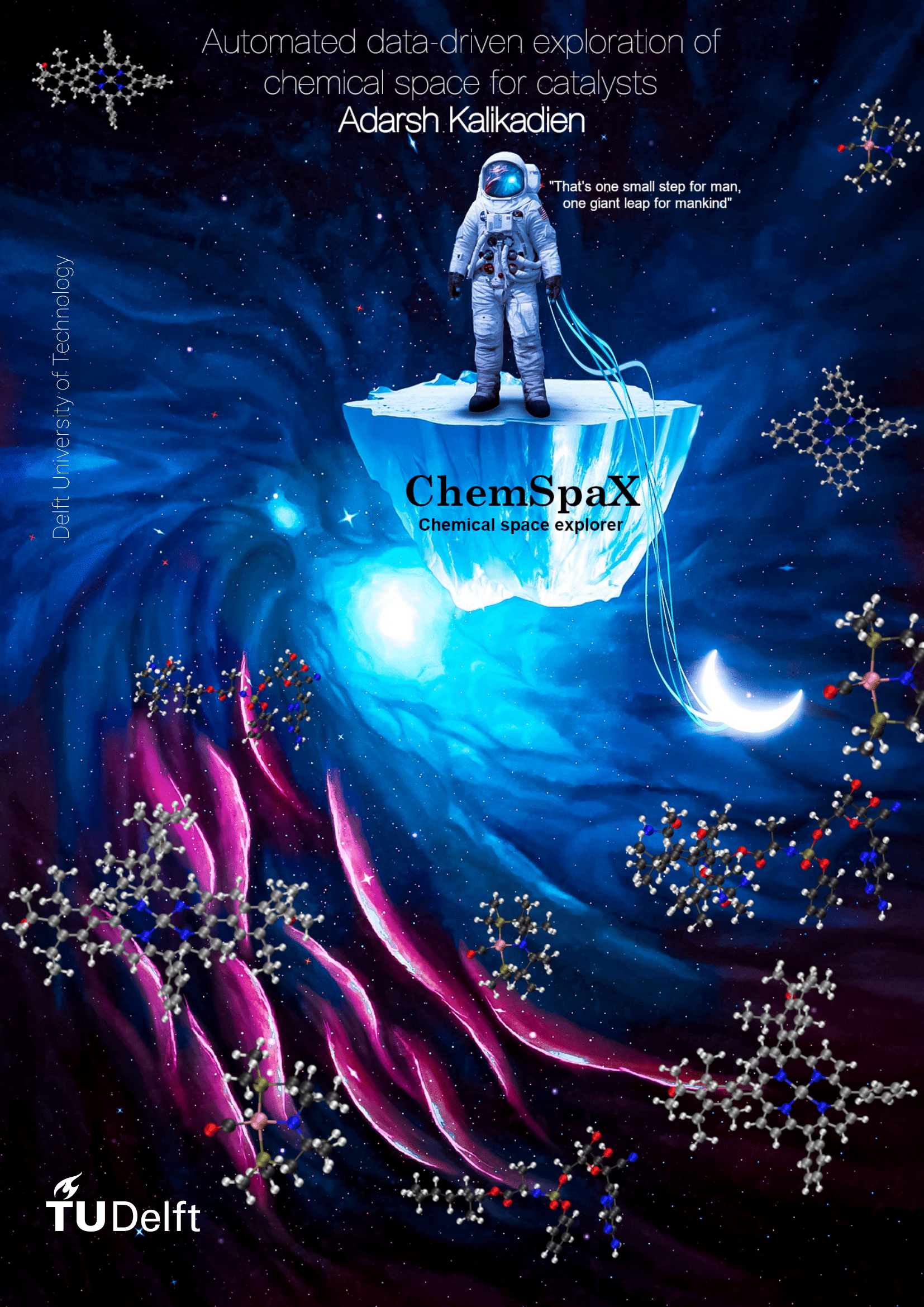Automated Data Driven Exploration of Chemical Space for Catalysis
Adarsh V. Kalikadien completed his MEP in the Inorganic Systems Engineering (ISE) Research Group of Prof. Evgeny Pidko under supervision of Dr. Vivek Sinha. He graduated with a perfect 10. He developed new software that will help in the discovery of new purposeful molecules, such as catalysts that enable the energy transition or drug molecules. Adarsh has made a video that explains his research. He answers some questions in this article.
Can you explain in a few sentences what your research is about?
"In this research we tried to create a widely applicable and easy-to-use tool for usage in accelerated catalyst design. If you think about it, designing the ideal catalyst for your process, or even understanding how catalysts work in a reaction, is a very data-driven problem. There are many molecules in the chemical space and lots of combinations of different molecules are possible. This makes it hard to just synthesize one catalyst in the lab and hope for the best result. However, using quantum chemistry and statistical methods on many computationally generated molecular structures can increase our chances of finding something useful. This is a combination of the experimental chemistry with computational chemistry. Like every ‘data-driven’ or ‘big data’ method, everything starts with the availability of data. In my research I designed a tool, the chemical space explorer ChemSpaX, which aims to explore the chemical space and create many potentially useful structures for scientists. This tool will be open-source and freely available via ISE's Github page."
Can you mention anything that you came across that gave direction to your research?
"The motivation for my research project is interesting. I think that it was a mix of laziness and a willingness to explore. As said before, for a data-driven catalyst design workflow you will need a lot of catalyst structures. Manually creating modifications of molecular structures is a very cumbersome task, you would have to open some molecular structure on the computer, click on what you are trying to modify, save and repeat. Imagine doing that for thousands of structures, that will take weeks or months! My supervisors and I wanted to automate this process and create something that would not only relieve us (and other hardworking people) from this manual work, but also accelerate the research of catalyst design/discovery. As de Belastingdienst would motivate it: “leuker kunnen we het niet maken, wel makkelijker”. Creating such a tool was something new to all of us, but we liked the challenge."
You have completed your MEP with a perfect 10! Can you tell us what was the deciding factor for that wonderful mark?
"I am very proud of this wonderful mark; it makes me happy that my hard work during these difficult times has been rewarded. I was told that there were multiple main contributions to this exceptional grade. Firstly, I was actively trying to collaborate and get feedback on my work, which is a sign that you are interested in your research. Secondly, I was able to design a computational tool from scratch that will be used for further research within ISE (and hopefully a larger part of the scientific community), which exceeded the expectations of my project. Lastly, apart from writing a very good thesis, we are working on two scientific publications and I am the first author of one of them. According to my supervisors and the thesis committee, getting two publications from a master thesis is a very exceptional achievement." (See buttons on the right).
What is going to happen next?
"My tool, the chemical space explorer ChemSpaX, will be used for further research within ISE. For example, we are working on a workflow that will glue experimental and computational chemistry together. In this workflow we want to use reaction data from experiments and automatically augment them using computational methods to learn more about catalysts. Additionally, as mentioned before, we are working on two publications that contain data generated by ChemSpaX and hopefully more research using my tool will follow in the future.
I am currently doing my internship as a quantitative researcher at Van Lanschot Kempen, where I am applying my computational and technical skills to the data-driven world of finance. After the summer vacation I will start my PhD at ISE, where I will work on developing an automated platform for prediction and autonomous design of new catalyst systems relevant for the pharmaceutical industry. I really look forward to this experience. I have learned a lot at ISE and I expect that we will work on many more interesting scientific challenges together."

